![]()
Sun, June 19, 2011 | The Meir Amit Intelligence and Terrorism Information Center
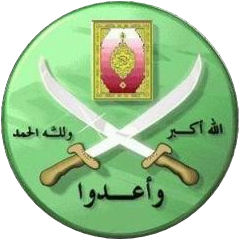
The Muslim Brotherhood logo depicts a Qur’an flanked by two swords, reflecting its status as the movement’s source of authority and ideological foundation. At the bottom is the Arabic word for “prepare,” taken from Surat al-Anfal, verse 60: “And prepare against them whatever you are able of power and of steeds of war by which you may terrify the enemy of Allah and your enemy.” Note: (1)
The Muslim Brotherhood – Chapter 1: The historical evolution of the Muslim Brotherhood in Egypt
The Muslim Brotherhood is an Islamic mass movement whose worldview is based on the belief that “Islam is the solution” and on the stated aim of establishing a world order (a caliphate) based on Islamic religious law (Shariah) on the ruins of Western liberalism. With extensive support networks in Arab countries and, to a lesser extent, in the West, the movement views the recent events in Egypt as a historic opportunity. It strives to take advantage of the democratic process for gradual, non-violent progress towards the establishment of political dominance and the eventual assumption of power in Egypt and other Middle Eastern countries.
Overview
The Muslim Brotherhood is the largest religious-social movement in the modern era, and has the largest deployment and greatest influence of all Islamic factions operating among Sunni-Muslim societies in the Middle East and elsewhere. Its establishment and rise to prominence took place on the backdrop of dramatic regional events, particularly the fall of the Ottoman Empire at the end of World War I and the occupation of Muslim countries by the “infidel” West.
The establishment of the Muslim Brotherhood marked the beginning of the second wave of Islamic activism — an ideological school of thought seeking to provide an authentic cultural, socio-economic, and political response to the challenges of modernity brought by the West’s infiltration into the Middle East, and into Egypt in particular. While the first wave (from the 1880s to the 1920s) was mostly an intellectual-ideological effort,[2] the second wave (from 1928) transformed that effort into organized political activity and institutionalized social activity. This activity was based mostly on religious preaching (“battle for hearts and minds”) and welfare services for the weaker sectors of society, mainly in urban areas.
The Muslim Brotherhood is a modern phenomenon both in terms of the social fabric of its supporters and leadership, and in terms of its religious worldview, which follows the ideological line established by the philosophers of the first wave of Islamic activism. Its founders, senior activists, and most members are educated urban people from the middle and low-middle class. While many of them have had some traditional education, they acquired higher education in modern institutions[3] rather than from traditional clerics and preachers or Sufi orders, an inseparable part of popular Islam in Egypt.
Unlike the traditional Islam espoused by members of the religious establishment, relying on a blind imitation of the Islamic religious-legal tradition (taqlid), the Muslim Brotherhood calls for a return to “original” Islam (Salaf) by reviving the ijtihad — an interpretation of religious sources (the Quran and Prophet Muhammad’s Sunna) in accordance with the spirit of the time, to turn Islam into a relevant response to current challenges.
Among the factors that facilitated the movement’s growth and, to a significant extent, have remained present during its existence are: economic distress — deterioration in the socio-economic situation, a large division between classes in society, a rapid urbanization accompanied by an identity crisis and economic distress as an individual relocates from the countryside to the city, and unemployment among a fast-growing educated middle class; social factors — growing Western influence, secularization, presence of colonial forces, followed by a failure of the socialist and pan-Arab ideas promoted by Nasser’s regime; and the passivity of the religious establishment, which soon became a provider of religious credence for the regime’s policy.
Thanks to its attractive ideological platform and social activity, the movement has become highly popular with the Egyptian public, becoming first an ideological and then a major political opposition to the Egyptian regime.
In the first half of 2011, after the fall of the Mubarak regime, the Muslim Brotherhood entered a new phase in its history. The movement, previously outlawed, gained legitimacy. Now, for the first time, it intends to run to the parliament as a party named Freedom and Justice, aiming to win half of the seats. For this purpose it has appointed a leadership, it is formulating a political platform, exploring the possibility of extending its support base by jointly running with additional parties, and continues to send appeasing messages as to its goals.
Major phases in the movement’s evolution up to the fall of the Mubarak regime
Over the years, the Muslim Brotherhood has seen changes and developments in its ideology and conduct. These can be divided into several major phases:
a. The first phase (1928-1954) — the formation of the movement’s structure and path, and the establishment of its status in society.
b. The second phase (1954-1970) — isolation and conflict with the regime, accompanied by a strong internal division between the radical faction that had evolved in the movement and the pragmatic faction (the movement’s main stream).
c. The third phase (1970 to early 1990s) — the era of relative political openness on the part of the regime, the secession of radical factions from the Muslim Brotherhood, and the beginning of its integration into the political system.
d. The fourth phase (mid-1990s until now) — increased suppression by the regime and internal reflections within the movement over the identity it needs to adopt (a socio-religious movement and/or a political party), accompanied by repeated internal tensions.
The first phase (1928-1954)–the movement’s formation
The Muslim Brotherhood was established by Sheikh Hassan al-Banna in Ismailiyah, in 1928. Unlike the elitist discourse of the philosophers from the first wave of Islamic activism, Al-Banna’s was a popular message. He addressed the masses and envisioned a practical goal: the establishment of a socio-religious movement. It would be the first step towards a long-term goal: the liberation of Egypt and the land of Palestine from foreign rule, the establishment of an Islamic rule in Egypt, and then — the reunification of the Muslim nation and the reestablishment of the Islamic caliphate (abolished in 1924).
The movement began as an association for Islamic reform, aiming to serve workers who had emigrated from the countryside to cities in the Suez region, then under British rule. It soon spread to Cairo (in 1932-1934) and, in its second decade, already had an estimated 500 branches and half a million members.
The movement was able to rise above similar organizations common in Egypt at the time and become highly popular thanks to Hassan al-Banna’s charisma and his ability to combine a religious message addressing the masses,[4] i.e., preaching for a return to pure, original Islam, and the socialist idea, i.e., the development of infrastructure for volunteer-based welfare services for the weaker urban sector of society. Another unique characteristic of the Muslim Brotherhood was that it bridged between folk customs and cultural traditions on one hand and modern concepts of education and organization on the other.
The social service network established by the movement formed the platform for the spread of its ideas, aimed to garner broader social support to eventually bring the Muslim Brotherhood to power. The flexibility in membership levels set by Al-Banna[5] also made it possible to recruit a wide spectrum of members within a short time.
In its formative phase, the movement also saw its share of disagreements and internal tensions. Challenges to Al-Banna’s leadership were heard as early as in 1932, as well as in 1939, and were accompanied by secessions of activists from the movement.
Despite the movement’s political aspirations, Hassan al-Banna’s original thought prohibits the movement from taking part in the party system due to concerns that such integration would lead to its corruption. The Muslim Brotherhood did avoid doing so early on, even though the royalist regime imposed no restrictions on it with regard to this issue.
The movement’s basic organizational structure emerged in the first decade of its existence. The General Guidance Office was established (with regional administrative offices and various associations under its control), and Hassan al-Banna became the first general guide (the highest position in the Muslim Brotherhood). A “secret apparatus” (the operative wing) was established alongside the leadership body. The purpose of the “secret apparatus” was to fight the British in Egypt and the Jews in Palestine to liberate Muslim lands. However, the existence of the apparatus likely reflected a deeper understanding within the movement that, in order to attain power, it would need not only a broad-based social consensus but also actual strength.
The movement’s violent activity through the “secret apparatus” began in the 1940s.[6] It was not aimed against Egyptians, but rather against the British and senior regime officials (taking mainly the form of retaliation for the regime’s measures against the movement and its activists).[7] Hassan al-Banna was eliminated in 1949, probably by the regime’s secret police, in revenge for the Muslim Brotherhood’s assassinations of the regime leaders. His elimination plunged the movement into a serious internal crisis.
The second phase (1954-1970)–confrontation with the regime
The first two years of the Free Officers’ regime (1952-1954) were a honeymoon period in the Muslim Brotherhood’s relations with the new regime. The movement was a partner in the regime change and expressed support for the new regime, while it in turn granted a senior position to a prominent Muslim Brotherhood member.
This period came to an end with the attempt on Nasser’s life (1954), after he signed an agreement with Britain allowing it to retain its military presence in the Suez Canal region. Following the attempt, the regime used an iron fist against the movement and its members and outlawed it, a situation that, legally, persists to this day.
During the conflict with the regime, thousands of the movement’s leaders and activists were put to trial and arrested. Under the leadership of senior activist and ideologue Sayyid Qutb, the movement went through a process of ideological radicalization.[8] Qutb’s radical thought produced a source of division within the movement.
While most gave top priority to social activity (da’wah) and considered armed struggle (jihad) to be a last resort that should only be used if the movement was banned from pursuing its social activity, one of its factions took the view that the armed struggle should be broadened to include not only foreigners but also Muslim governments that did not follow religious law and supposedly compromised the welfare of the Islamic nation. In 1969, a pragmatic faction led by general guide Hassan al-Hudaybi publicly renounced Sayyid Qutb. He was executed in 1966, and his teachings became the cornerstone of violent Islamic radicalism, which later gave rise to Al-Qaeda.
Forced to keep a low profile, the movement took the opportunity to formulate its ideological line, spread the writings of its major ideologues, and deepen its social infrastructure.
The third phase (1970 to early 1990s): renunciation of violence and gradual entry into the political system
The de-Nasserization policy led by Sadat as he came to power (1970) temporarily brought the interests of the Muslim Brotherhood in line with those of the regime. On Sadat’s orders, many of the movement’s activists were gradually released and allowed to resume public activities in exchange for granting legitimacy to the president’s administration (“the faithful president”).
Sadat’s policy of political openness affected the leadership of the movement and gradually strengthened its pragmatic line (which had also existed under Nasser) and willingness to engage in a dialogue with the regime.[9] The desire to mobilize the masses through the establishment and society of the time contradicted the view held by the movement’s radical factions, which considered the Egyptian regime and public to be infidel and espoused an immediate, drastic change in the country. The gap between the factions grew deeper throughout the 1980s; eventually, the radical groups splintered from the movement.[10]
In fact, Sadat’s reign marked the beginning of the third wave of Islamic activism that lasted into the 1980s and 1990s. For the Muslim Brotherhood, this meant a turn to a more active path of realizing the return to Islam by integrating into the political system, and at the same time was reflected in the launch of attacks on the regime and on ideological opponents by the violent groups. This period saw the proliferation of Islamic groups (jama’at) on university campuses[11] (starting in 1971); militant terrorist groups started appearing later.[12]
In addition to Sadat’s lenient policy, a number of trends and developments in Egypt and elsewhere also helped advance the third wave of Islamic activism: the collapse of the idea of pan-Arabism following the 1967 defeat against Israel; the Islamization process of Egyptian laborers who began working in Saudi Arabia and were exposed to the strict Wahhabi-Hanbali doctrines; the Iranian revolution, which became an example for a successful takeover of (Shi’ite) clerics over a secular country; and ongoing socio-economic distress in Egypt, particularly noted for the increasing frustration among the educated youth (whose number became significantly higher following higher education reforms) over their inability to find jobs to match their skills.
The honeymoon period between Sadat’s regime and the Muslim Brotherhood did not last, coming to an end by the mid-1970s. The regime, owing to concerns over the power gained by the Islamists and the strong resistance encountered by Sadat’s policy (mainly the policy of infitah, strengthening the ties with the West, and turning towards a peace treaty with Israel), began systematically suppressing the Islamists, including the moderate faction.[13] In 1981, Sadat’s assassination by the Al-Jihad group was the peak of the Islamists’ fight against the Egyptian regime.
Early in his presidential reign (starting in 1981), President Mubarak showed relative tolerance for the Muslim Brotherhood and the other opposition parties to create a unified national front against the threats of Islamic terrorism.[14] At least until the mid-1990s, and as long as Islamic terrorism posed a notable threat to stability, Mubarak’s policy towards the movement was “controlled acceptance”, i.e., political openness moderated by security restrictions (surveillance and occasional small-scale arrests) while putting a spoke in the wheel of its attempts to participate in the political system.
While the movement preferred to avoid confrontation, it began (as part of the pragmatic strategy) penetrating the political scene on the basis of its social support. This was reflected mainly in participation in elections for the official institutions (the People’s Assembly and the Shura Council, local councils, trade unions). It was sometimes done by cooperating with opposition parties and by increasing its activity among students (taking part in elections for student councils and other bodies on the university campuses).
While the movement’s success in penetrating the government bodies (the People’s Assembly and the Shura Council) was impressive yet limited[15] (due to the regime’s intervention), by the mid-1990s it made impressive electoral achievements in student organizations and university teaching bodies, as well as trade unions.[16]
The early 1980s also saw the proliferation of Islamic financial companies and institutions, a time of significant development for the movement’s economic infrastructure (including its network of public welfare services). The period of growth ended when the regime intensified its control of the Muslim Brotherhood’s economic activities in the late 1980s, which, according to some, was a major blow to its moderate activity. The watershed in the regime’s stance towards the social and economic activities of the Muslim Brotherhood was the movement’s assistance to victims of the 1992 earthquake, whom the regime was powerless to help.
The fourth phase (mid-1990s to now): between movement and party
The change in the regime’s policy towards the movement first became apparent in the early 1990s, when the struggle between the regime and the Islamic terrorist organizations escalated. During that time, the regime came to the realization that, in the long run, the Muslim Brotherhood posed a significant threat to its stability. The realization came after the movement’s success in penetrating official political establishments, the Islamists’ victory in the 1992 elections in Algeria, and the exposure of Muslim Brotherhood documents (also in 1992) presenting its plans to take over Egypt within several years.[17]
Based on this understanding, the regime adopted a tougher stance towards the movement by the mid-1990s. The regime began taking the harshest measures in 1995, encouraged by its success in fighting Islamic terrorism. Constitutionally, the movement’s ability to take part in elections for official institutions was restricted;[18] it was tarnished by slanderous propaganda and accused of involvement in terrorism; and suppressed with mass arrests (including of its senior figures)[19] that, to a considerable extent, paralyzed its activity until 2000.
During this time, the movement underwent yet another crisis — the secession of a group led by the younger generation to establish a political party (Al-Wasat) in 1996. The establishment of the party was not an issue that gained internal consensus within the movement, since its members (particularly the veteran leadership) understood that the regime would not allow it and even use the opportunity to crack down on the movement. This was apparently compounded by the difficulty in reconciling the principles of Islam with political objectives. At any rate, it was only after Mubarak’s regime was toppled that the Al-Wasat party was granted legal status in Egypt. The party adopted a moderate, democratic political platform, when in fact it is a competition to the Muslim Brotherhood, which has currently announced that it wants to establish its own party.
In the 2000s, with the release of Muslim Brotherhood members and leaders arrested in 1995-1996, the movement made new political achievements. The biggest was winning about 20 percent of the seats in the 2005 elections for the Egyptian People’s Assembly (88 of 444 contested seats).[20] The achievement was made possible thanks to close legal monitoring imposed on the elections as part of the democratization pressure exerted on Egypt by the West, which made it more difficult for the regime to skew the results as it usually does. It is hard to estimate to what extent the elections reflected the people’s support for the movement, and to what extent it constituted a protest vote against Egypt’s ruling party and official opposition parties.
During the short-lived “age of democratization” (2004-2006), the movement even took part in political protests against the regime in cooperation with other opposition elements, mainly the Kifaya movement.[21] The height of the political activism was a show of strength in Al-Azhar University (December 2006), perceived by the regime as a real challenge against it.
With the cessation of external pressure for democratization, the regime once again cracked down on the movement, both constitutionally (i.e., the 2007 amendment banning the establishment of religious-natured parties) and in practical terms (i.e., arrests, prevention of Muslim Brotherhood members from being elected to government institutions,[22] and damaging its socio-economic infrastructure).
Since then and up to the toppling of the Mubarak regime in early 2011, the movement avoided confrontations with the regime and focused on its da’wah activity. While it often directed public criticism against the regime, it avoided taking part in anti-regime protests due to internal political considerations, and usually did not engage in actual cooperation with other opposition elements. Even so, the movement repeatedly proclaimed its right to participate in the political system and did not abandon its attempts to run for official government institutions.
With Mubarak’s regime gone, such declarations are once again made by the movement, which announced its intention to establish a party called “Freedom and Justice”. Muslim Brotherhood spokesmen attempt to allay concerns over the movement’s intentions, portraying Freedom and Justice as a civilian party with a commitment to democratic values, along with the Islamist orientation.
This comprehensive analysis of the Muslim Brotherhood (by ITIC) consists of 12 chapters. All 12 chapters are listed below:
Chapter 1: The historical evolution of the Muslim Brotherhood in Egypt
Chapter 2: The ideology of the Muslim Brotherhood
Chapter 3: The Muslim Brotherhood’s education, preaching, and social activity
Chapter 4: The structure and funding sources of the Muslim Brotherhood
Chapter 6: The Muslim Brotherhood’s stance on the Palestinian-Israeli conflict
Chapter 7: The development of political discourse in the Muslim Brotherhood and the 2007 election platform
Chapter 8: Profiles of prominent Muslim Brotherhood figures in Egypt
Chapter 9: The Egyptian Muslim Brotherhood’s ties to its branches in Middle Eastern and Western countries
Chapter 10: The Muslim Brotherhood in other Arab countries and in Europe
Chapter 11: A profile of Sheikh Dr. Yusuf al-Qaradawi
Chapter 12: Islamic jihadist organizations in Egypt ideologically originating in the Muslim Brotherhood
You can download the full study in PDF-format here
Note:
[1] Sahih International, 8:60.
[2] Its three most prominent representatives are Jamal al-Din al-Afghani (1838-1897), Muhammad Abduh (1849-1905), and Rashid Rida (1865-1935).
[3] For example, Hassan al-Banna and many Muslim Brotherhood leaders at the time were graduates of the modern academic institution Dar al-‘Uloum rather than Al-Azhar University.
[4] Unlike the ideologically inflexible Salafi movements of his time, Al-Banna avoided creating a dichotomy between orthodox and Sufi Islam, accepting Muslim believers from various Islamic schools of thought into the Muslim Brotherhood.
[5] The membership levels at the time were (from the most basic to the highest): associate member, affiliated member, practical member, and mujahid–the highest level, denoting deep financial and spiritual sacrifice for the movement and its principles.
[6] The violent activity of the apparatus included training volunteers for the war in 1948; assassinating the governor of Cairo and the prime minister of Egypt in 1948; and terrorist attacks against the British in the early 1950s.
[7] Examples include the assassination of Egypt’s then prime minister Fahmi al-Nuqrashi after his involvement in the release of a military warrant to disband the Muslim Brotherhood in 1948; and the assassination of the judge Ahmad al-Khazandar in 1949 after charging Muslim Brotherhood members with violent acts against British soldiers.
[8] This process was mostly reflected in the adoption of force and violence as legitimate means for the achievement of the movement’s objectives, as the public activity of the Muslim Brotherhood at the time was considerably reduced as a result of the severe blow struck by the Nasser regime against its organizational infrastructure. During that period, the movement’s detainees (particularly the younger generation) developed the concept of takfir, which permits violence not only against rulers who have strayed from the path of Islam but also against ordinary Muslims who do not practice a Muslim lifestyle according to the standards set by takfir philosophers.
[9] This approach was nurtured by the general guides Hassan al-Hudaybi (1951-1977), Umar al-Tilmisani (1977-1986), and his successor Muhammad Hamid Abu al-Nasr (1986-1996).
[10] Some of the major radical groups were Al-Takfir wal-Hijra, Al-Jama’ah al-Islamiyya, and Al-Jihad (see Chapter 12 for details).
[11] One of them was Shabab al-Islam (Youth of Islam) led by Issam al-Aryan (currently a high-ranking Muslim Brotherhood activist), which took part in student demonstrations as early as in 1971 and was among the first expressions of this Islamic wave.
[12] The first case of Islamic violence that shook the regime was the incident of the Military Technical College (1974), when an armed group of cadets led by Saleh Sariyyah attempted to storm the academy compound as a first step towards the toppling of Sadat’s regime. The attempt was thwarted by the authorities.
[13] Towards the end of his reign, when pressure from the opposition increased, Sadat made a dramatic move and issued an order to hit the Muslim Brotherhood’s infrastructure and arrest all opposition activists (September 1981). This crisis was the main factor that led to Sadat’s assassination on October 6, 1981.
[14] Mubarak freed most of the activists detained in Sadat’s days, and particularly Umar al-Tilmisani, the then general guide. His message was that he did not oppose the movement itself, but only its violent wing.
[15] When the movement first ran for the People’s Assembly in 1984, it won eight seats (of the 58 seats won by the alliance between the Muslim Brotherhood and the Al-Wafd party). In the next elections for the People’s Assembly, in 1987, the movement won 36 seats (of the 56 seats won by the three-way alliance between the Muslim Brotherhood, the Al-Amal party, and the Al-Ahrar party).
[16] The institutions in which Muslim Brotherhood representatives were elected to senior positions include the Union of Engineers (1987), the Union of Doctors (1988), the Union of Pharmacists (1989), the faculty club of Cairo University (1990), and the Union of Attorneys (1992). The movement won the majority of seats in the student unions of the universities of Cairo, Alexandria, and Zagazig (1987), and in 1989-1999 controlled the student unions in Mansoura and Al-Azhar. Main faculty clubs ruled by the Muslim Brotherhood included the universities of Cairo, Alexandria, and Asyut (1985-1986).
[17] This refers to the Salsabil affair, named after a computer company in Cairo owned by a senior Muslim Brotherhood figure (Khairat al-Shater). In 1992, security forces seized documents containing information on the movement’s structure, the names of major activists, guidelines on behavior in case of detention by the regime, the ties between the movement in Egypt and Muslim Brotherhood branches abroad, and its plan to take over the country. The plan mentioned the Muslim Brotherhood’s penetration into such public institutions as student organizations and trade unions, as well as efforts to infiltrate the army, police, and media and law apparatuses. The documents instructed activists to prepare for a confrontation with such forces as the government and the West, which would attempt to prevent the movement’s uprising plan, and to allocate financial resources towards the takeover plan.
[18] One example is the amendment of the trade unions election law in 1993. The law required the participation of at least 50 percent of the union members for the election to be considered legal. Thus the law enabled the regime to disqualify elections with low voter turnouts (the normal situation in Egypt) where most voters were members or supporters of the Muslim Brotherhood. As a result, the situation in many trade unions remained unchanged for several years, which were used by the regime to “deal with” Muslim Brotherhood candidates. Additionally, the ban on the establishment of religious-natured parties also remained in force.
[19] Of particular note in this context is the arrest of some 80 members of the Shura Council — one of the highest institutions in the movement — and their conviction by a court martial in November 1995, on the eve of the People’s Assembly elections. Since then, the movement avoids convening the Shura Council in a public, orderly fashion. The movement’s headquarters in Cairo was shut down in the same year. It is unclear when the Cairo headquarters was reopened; however, in recent years it operates from the capital.
[20] With ten more deputies appointed by the president, the People’s Assembly has a total of 454 seats. In 2009, 64 seats reserved for women were added to the assembly, bringing the total number of contested seats to 518.
[21] Kifaya (“Enough”), an umbrella movement for various political factions (including activists from Islamic movements, intellectuals, representatives from left-wing parties, and judges) established in July 2004 around the declaration about opposition to President Mubarak’s ongoing presidential tenure and the passing on of power to his son, Gamal.
[22] The Shura Council (June 2007, June 2010), local authorities (April 2008).



 RSS
RSS

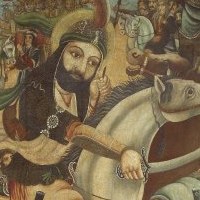
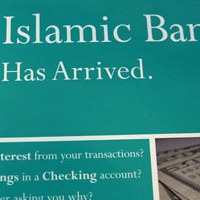
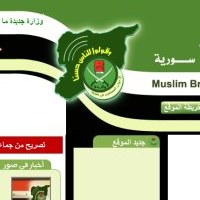

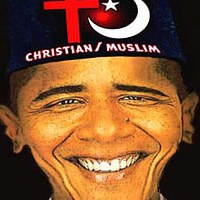




The historical evolution of the Muslim Brotherhood in #Egypt | #Islamism http://bit.ly/oK0akZ
The Muslim Brotherhood is the largest religious-social movement in the modern era, and has the largest deployment… http://fb.me/ydp6cP0z
[…] Chapter 1: The historical evolution of the Muslim Brotherhood in Egypt […]
The Muslim Brotherhood is the largest religious-social movement in the modern era, and has the largest deployment… http://fb.me/ydp6cP0z
The historical evolution of the Muslim Brotherhood in #Egypt | #Islamism http://bit.ly/oK0akZ